Paper or Plastic?
The short answer is plastic. Cards come in two basic types: plastic cards and paper cards coated in plastic. Paper cards will typically last a few games before they become too limp to easily shuffle and play with. Plastic cards will typically last a couple years. There is nothing wrong with paper cards but they do have a different feel and shorter life. We’ll cover only plastic playing cards here because they really are a relatively affordable luxury you should provide for your game.
You can use a single deck in your game but you will speed things up by having two decks with different color backs such as red and blue. Cards sold this way are referred to as a “setup”. This allows the game to continue with the red deck for example, while someone other than the dealer shuffles the blue deck to get ready for the next hand. Having different color card backs prevents the decks from mixing while both being on the table.
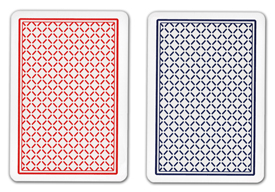
Size Matters
Decks will come in either a bridge size or poker size.
Bridge size is smaller at 2.25″ wide while poker is 2.5″ wide and both are typically 3.5″ high. Some people prefer bride size because they are easier on the hands when dealing and can be easier to handle when playing a game that requires you to have more than two cards in your hand.
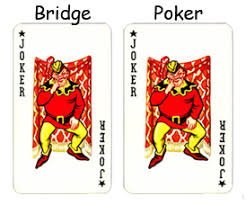
Anatomy of a Card
Card faces are made up of values and suits which are represented in the corner of the card. “Pips” refers to the corner of the card representing that value and “index” refers to the size of those pips. Common choices for index is “Standard” and “Jumbo”. Pips usually come in two or four.
Cards are also available in a four-color version and come have unique pips such as Fournier’s “Poker Peek” corners which can make it easier to see when bending the corner of a card up to read it at the table.
Cards can also come in what is known as “security ink” which offers better contrast to casino video surveillance. The color red used is very dark and can be confused for black at a home game where lighting might be less than perfect.
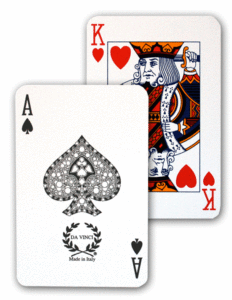
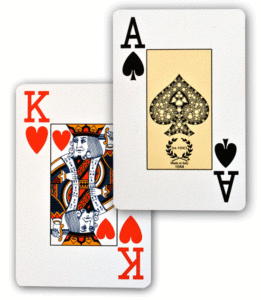
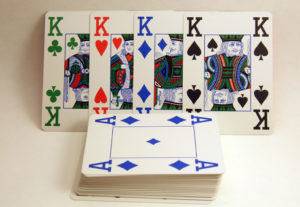
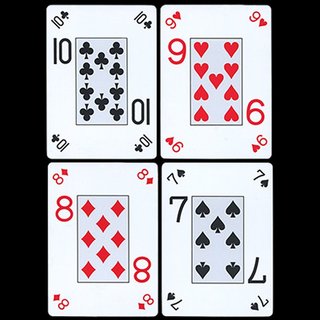
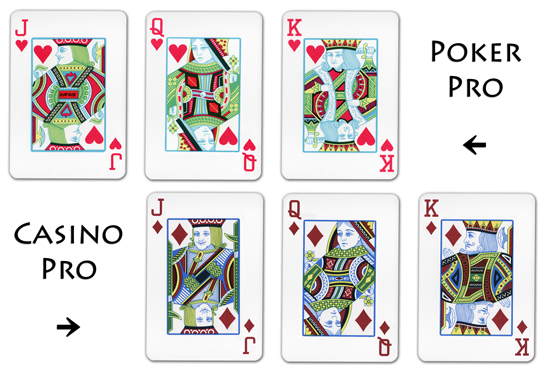
Care and feeding of your cards
You can clean plastic cards but it should be done selectively to cards that need it. Fading can occur after washing.
Typical cleaning instructions are as follows (from copagcards.com):
- Use cold water. Never use hot water. Avoid warm water. Try cleaning your cards with cold water with no soap to start.
- Use a non abrasive cloth and gently wash the playing cards individually. Do not use a paper towel or any other paper based towel products. Definitely avoid any sort of abrasive scrubbing material.
- Clean only a few cards at a time.
- Rub very lightly on both sides.
- Inspect your cards to ensure they are clean. If water only did not clean your cards then wash the cards again with a neutral soap. A neutral soap is a soap that is not alkaline or acidic. The pH balance for a neutral soap is 4. The most commercially identifiable pH neutral soap is Dove. We recommend Dove soap when just plain water will not work.
- Once a clean card is achieved, dry thoroughly at once using a clean soft non abrasive cloth.
- Spread cards on a table and allow up to one hour on each side to air dry.